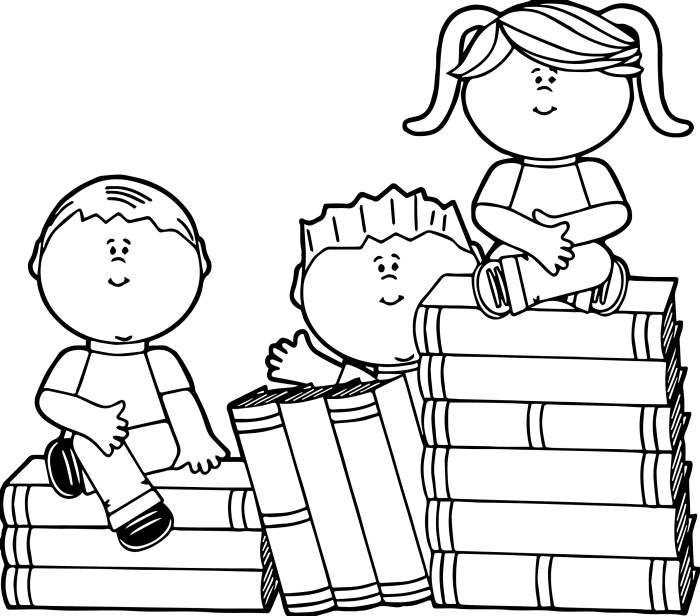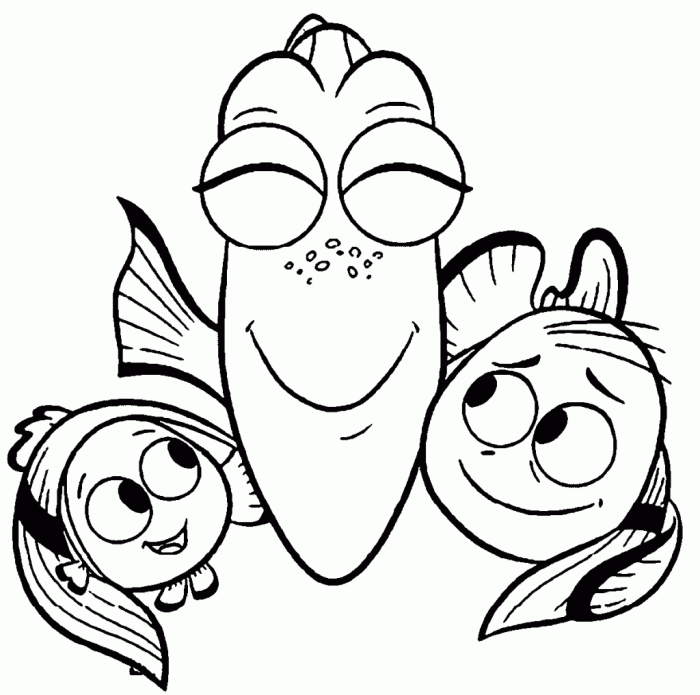Design and Artistic Aspects of Free Coloring Book Pages

Free coloring book pages – Free coloring pages offer a diverse range of designs and artistic styles, catering to a broad audience with varying interests and skill levels. The accessibility and widespread availability of these pages online have led to a rich tapestry of creative expressions, from simple Artikels to intricate mandalas. Understanding these design elements is crucial for both creators and users of these popular resources.
Common Design Elements in Popular Free Coloring Pages
Popular free coloring pages frequently incorporate several key design elements to enhance their appeal and usability. Simple, bold Artikels are common, ensuring easy coloring for younger children. Many pages feature recognizable subjects like animals, flowers, and fantasy creatures, appealing to specific interests. The use of positive and negative space is also prevalent, creating visual interest and allowing for creative interpretation by the colorer.
Finally, many designs incorporate symmetry and repeating patterns, adding a sense of visual balance and complexity. These elements combine to make the coloring experience engaging and enjoyable for a wide range of ages and abilities.
Artistic Styles Used in Free Coloring Pages
Free coloring pages showcase a variety of artistic styles, each offering a unique aesthetic and level of complexity. Minimalist designs often feature simple shapes and lines, providing a calming and accessible coloring experience. Intricate designs, on the other hand, boast complex patterns and detailed illustrations, offering a more challenging and rewarding activity for experienced colorers. Cartoonish styles employ exaggerated features and playful designs, appealing primarily to younger audiences.
Zentangle-inspired designs utilize repetitive patterns and abstract shapes, promoting mindfulness and relaxation. Finally, realistic styles aim for accurate depictions of subjects, providing a more challenging and rewarding experience for those seeking a detailed coloring project.
Sample Coloring Page Design
This sample coloring page features a whimsical unicorn incorporating elements from multiple styles. The unicorn’s body is rendered in a simplified, cartoonish style with large, expressive eyes and a flowing mane. The mane and tail, however, are composed of intricate, swirling patterns reminiscent of a zentangle design, creating a visual contrast. The background incorporates minimalist geometric shapes, providing a simple yet visually interesting backdrop.
The unicorn’s horn is a single, bold line, emphasizing its magical quality. The color palette would include pastel shades for the body (light pinks, lavenders, and blues), vibrant jewel tones for the mane and tail (emerald green, sapphire blue, ruby red), and muted earth tones for the geometric background (beige, brown, and olive green). The lines are predominantly bold and easy to follow, but the intricate patterns in the mane and tail offer a challenge for more experienced colorers.
The overall effect is a balanced design that appeals to both children and adults.
Design Techniques in Free Printable Coloring Pages
Several design techniques are frequently employed to enhance the visual appeal and usability of free printable coloring pages.
- Symmetry and Repetition: Using symmetrical designs and repeating patterns creates a sense of visual balance and complexity, appealing to a wide range of colorers.
- Positive and Negative Space: The skillful use of both positive (filled) and negative (empty) space creates visual interest and allows for creative interpretation.
- Bold Artikels: Thick, clearly defined Artikels make the pages easy to color, especially for younger children.
- Varied Line Weights: Using different line thicknesses adds visual depth and texture to the design.
- Incorporation of Texture: Adding subtle textures, such as stippling or cross-hatching, can create a more visually interesting and engaging coloring experience.
User Experience and Accessibility of Free Coloring Book Pages

Providing free coloring pages is a fantastic way to share creativity, but a positive user experience is crucial for success. A smooth, accessible download process and a well-designed website are key to attracting and retaining users, especially those with disabilities. This section explores how to ensure ease of use and accessibility for all.
Download Process Simplicity, Free coloring book pages
A straightforward download process is paramount. Users should be able to locate, select, and download coloring pages with minimal clicks and navigation. Ambiguous buttons or overly complex download procedures can frustrate users and lead them to abandon the website. Clear, concise language should be used throughout the download process. For example, buttons should be clearly labeled “Download PDF” or “Download PNG,” and progress indicators should be visible to inform the user of the download status.
Providing multiple download options (e.g., PDF, PNG, JPG) caters to different user needs and software compatibilities. A well-designed download system ensures a seamless and enjoyable experience, encouraging users to return for more.
Accessibility for Users with Disabilities
Accessibility is crucial for inclusivity. Coloring pages should be accessible to everyone, regardless of ability. For users with visual impairments, providing alternative text (alt text) for images is essential. Alt text describes the image for screen readers, allowing visually impaired users to understand the content. For example, instead of `  `, use `
`, use ` `. Similarly, using sufficient color contrast between text and background ensures readability for users with low vision. Consider offering coloring pages in high-contrast versions for users who need them. Providing a text description of the image alongside the visual also aids accessibility.
`. Similarly, using sufficient color contrast between text and background ensures readability for users with low vision. Consider offering coloring pages in high-contrast versions for users who need them. Providing a text description of the image alongside the visual also aids accessibility.
Website Design and Page Layout Impact on User Experience
Website design significantly impacts user experience. A cluttered or confusing layout can make it difficult for users to find what they need. A clean, intuitive design with clear navigation and a logical structure is essential. Coloring pages should be easily browsable by category or theme, allowing users to quickly locate pages of interest. Large, high-resolution previews of coloring pages allow users to assess the content before downloading.
Furthermore, the website should be responsive, adapting seamlessly to different screen sizes (desktops, tablets, and smartphones). A well-structured website ensures a smooth and enjoyable experience, increasing user engagement and satisfaction.
Improving Website Accessibility with Descriptive Alt Text and Headings
Implementing descriptive alt text and appropriate headings is crucial for website accessibility. Each image should have detailed alt text describing its content, including the subject, colors, and any significant features. For instance, for an image of a cat, instead of “cat,” use “A playful orange tabby cat sitting on a windowsill, looking out at a sunny garden.” Using appropriate headings (H1, H2, H3, etc.) structures the website content logically, making it easier for screen readers to navigate.
Headings should accurately reflect the content of the section. For example, “Free Printable Coloring Pages for Kids” would be an appropriate H1 heading for a page featuring coloring pages for children. Using semantic HTML and following accessibility guidelines (like WCAG) ensures a more inclusive and user-friendly experience for everyone.
FAQ Resource: Free Coloring Book Pages
Can I sell coloring pages I download for free?
Nah, usually not. Check the license; most free coloring pages are for personal use only. Selling them would be a copyright no-no.
What’s the best paper for coloring?
Heavier weight paper (at least 100gsm) is best to prevent bleed-through, especially with markers. Cardstock is awesome!
Are there free coloring pages for adults only?
Totally! Many websites specialize in intricate designs perfect for grown-ups who want to de-stress and get creative. Search for “adult coloring pages” to find them.
What if I can’t print?
No worries! You can still color them digitally using a drawing tablet and software like Krita or Photoshop.
